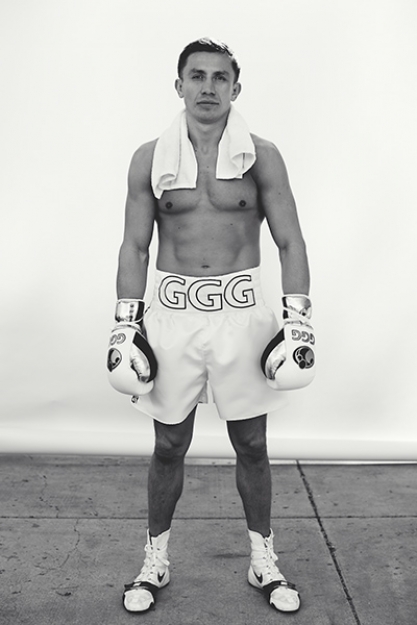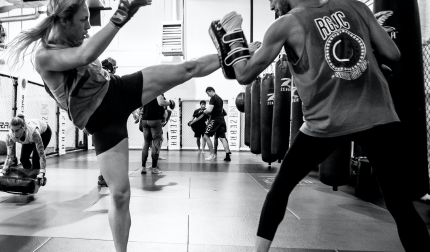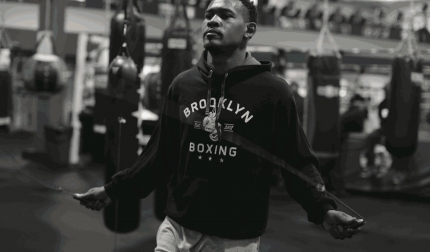When the reigning WBA and IBO middleweight champion needs to relax, he takes his pole and pail and goes fishing. While living in Germany, Gennady Golovkin, known in the boxing world as “GGG” or “Triple G,” would take his young son, Vadim, to a serene lake and revel in his son’s happiness. He could watch the young boy delight in one of life’s simple pleasures. “It’s a different time now,” Golvokin says. “When I was his age, we would play in the streets all day. I had a lot of friends who lived close to me, and we played outside a lot. It was the best time. I didn’t have much to think about then.”
As the most feared fighter in the middleweight division, and perhaps the best pound-for-pound fighter in all of boxing, Golovkin now has plenty to think about. With a 32-0 record, and a stunning 29 wins by way of knockout, Golovkin has become one of the sport’s main attractions. His three knockout wins at Madison Square Garden in New York City took place in front of sold-out crowds, including many fans from his native Kazakhstan.
While many believe that Golovkin’s knockout magic will continue, he doesn’t take anything in his life for granted. Golovkin grew up in a town called Karaganda, a city located close to several coal mines in Kazakhstan. “It was a tough city,” he says. “My father went to the coal mines every day, and my mother worked in a laboratory. Our life was hard, but we were a very close family.”
Golovkin was especially close to his older brothers, Vadim and Sergey. When young Golovkin told his older brother Vadim that he and his friends wanted to box, Vadim supported him wholeheartedly. Golovkin took to the sport quickly and showed immediate promise. But in 1990, when he was only eight years old, a call came to his home that changed his life. Vadim, a soldier in the Russian army, had died. No explanation. No body sent home for a funeral. Only four years later, the family was informed that Sergey, too, was a casualty of war. The family was heartbroken. Golovkin kept punching through the pain. The amateur titles began to pile up.
When Golovkin turned 21, he was fighting at an elite level on the national stage. He took gold at the World Championships in 2003. Then in 2004, he defeated Andre Dirrell in Athens, on his way to an Olympic silver medal. Golovkin had success early in his career, but he wanted more. He wanted to be truly great—to see his name mentioned with the greatest fighters of all time. In 2010, he began boxing under his current trainer, Abel Sanchez, in Big Bear, California. Sanchez immediately saw a diamond from that coal town in Kazakhstan, and they went to work together.
“Abel has helped me develop the style I have now,” Golovkin says about his punching prowess. “He always focused on making exciting fights and putting pressure on opponents. It has worked well between us. The results have been a lot of knockouts in the ring.”
Those knockouts have become a must-see for every fight fan. A thunderous left hook to the body in the third round made easy work of contender, Matthew Macklin. A sweeping left hook to the head kept an experienced Marco Antonio Rubio on the canvas in the second round of their bout. Most recently, Golovkin’s power was center stage in Monte Carlo, when the referee had to stop his bout with the previously 29-1 Martin Murray in the eleventh round. The punishment Golovkin inflicted was too dangerous to allow it to continue. It was Golovkin’s 19th straight knockout.
Though he has dispatched several contenders early and somewhat easily, he still feels he has a lot more to prove. “I am in the prime of my career,” Golovkin says. “I still have a lot more to show people in the sport. For me, my priority is to unify the middleweight championship. I need to know who the best middleweight in the world is. I like it the old school way, when there was only one champion and everyone knew who he was.”
As his fan base is growing exponentially in America, Golovkin says his mind is never far from his two biggest fans. “To this day,” he says, “my mother still worries about me in the ring. She is very proud of me, but always very concerned. And my dad, he had a separate room in the house where he put all of the trophies and medals I won in the amateurs and my world title belts in the pros. He passed last year of a sudden heart attack, unfortunately. But he will always be my biggest fan.”
With so much of the past still on his mind, Golovkin enjoys the quieter moments with his family. He has moved his wife and son from Germany to Big Bear, so they can be with him while he trains. He prefers to stay busy training and fight four times a year, and the time away from them became too much. Now Golovkin and his son can enjoy fishing the waters near Big Bear. And as they float the day away, he thinks about how far he has come and how long ago his own childhood was. Yet, there are still fights to be waged. The truth of who deserves be the middleweight division’s undisputed champion needs to be resolved. And then, Golovkin can truly rest.









